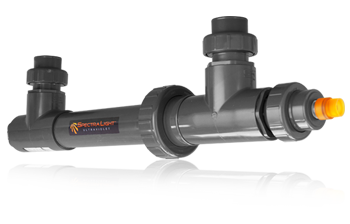Shopping Cart
All orders qualify for risk-free 30 day trial & complimentary US shipping!
-- No items so far --
Total:
0
Support
Need help? Our Pool Experts are here to help.
All orders qualify for risk-free 30 day trial & complimentary US shipping!
-- No items so far --
Total:
0
Need help? Our Pool Experts are here to help.
Researchers have known for years that pool water can cause burning eyes, skin rashes, breathing problems and even damage to dental enamel. But now researchers are discovering that's just the tip of the iceberg.
Regardless of whether your pool uses regular chorine, a chlorine generator, or is a salt water pool, the problem is the same. We'll share with you three ground-breaking studies, all substantiated and credible.
This research was the first to investigate how typical chorine concentrations can cause respiratory problems. This ground-breaking study presented at the American College of Sports Medicine found exposure to traditional chlorine levels constricted airways in the lungs leading to coughing, wheezing, and shortness of breath. The typical chlorine level found in most pools is between 2 ppm and 4 ppm. According to the study, this concentration of chlorine causes some serious breathing problems. But when chlorine was lowered to just 0.5 ppm the problems disappeared. Other studies have confirmed that pulmonary function decreases when subjects are exposed to 1.0 ppm, but no adverse effects were found at 0.5 ppm chlorine. Read the full details of this study.

This study was published in the American Journal of Epidemiology, a medical Journal published on behalf of the John Hopkins School of Public Health. You may download the full article here. The findings were that swimming pool chemicals can be harmful when they are inhaled, ingested or absorbed through the skin while swimming. Researchers found that disinfection by-products are linked to an increased risk of cancer. They name trihalomethane (THM) as the most prevalent chlorination by-product and investigate long term exposure and bladder cancer risk. The conclusion was that swimming in chlorinated pools boosted bladder cancer risk by an alarming 57%. Researchers also noted that when chemicals such as THM is absorbed through the skin or lungs, it may have a more powerful carcinogenic effect because it doesn't undergo detoxification in the liver.
This is a peer reviewed study that appeared in the medical journal Pediatrics. In this study, supported by the National Fund for Scientific Research, researchers wanted to fully evaluate the connection between chlorinated swimming pools and allergic diseases. The researchers concluded that the chlorine used in pools can boost a child's risk of asthma up to six-fold. Chlorinated pool exposure was also found to contribute significantly to other respiratory allergies among adolescents. Dr. Alfred Bernard, a Toxicologist at the University, noted the following:
- Dr. Alfred Bernard
First, the chlorine levels recommended for swimming pools are often misguided. Researchers have found that the amount of chlorine found in pools is excessive. Repeated exposure to common chlorine levels can lead to a host of complications. Second, disinfection by-products are the most dangerous chemicals in pools, and are known to boost the risk of asthma and allergies. The more severe implications were an increased risk of bladder cancer. It all comes down to this. There's a lot at stake. Something must be done.

Researchers recommend seeking out pools with low chlorine levels. In addition, the World Health Organization has publicly stated that “Lower free chorine concentrations may be health protective when UV is used." This is fully supported by studies that found no adverse effects of chlorine at a low concentration of 0.5 ppm.
The solution is proven and simple. Ultraviolet light. SpectraLight is designed to safely eliminate dangerous chlorine by-products, helping us to protect what’s important. By harnessing the raw power of ultraviolet light. UV technology dramatically lowers the need for chlorine and eliminates chlorine by-products for a cleaner, safer, and easier to manage swimming pool or spa. Many commercial pools have already moved to UV disinfection, and with great success. And now SpectraLigh is making UV disinfection affordable for all.
There are a number of alternatives for swimming pool sanitation. Compare UV to chlorine, ozone, ionization and other technologies here.
